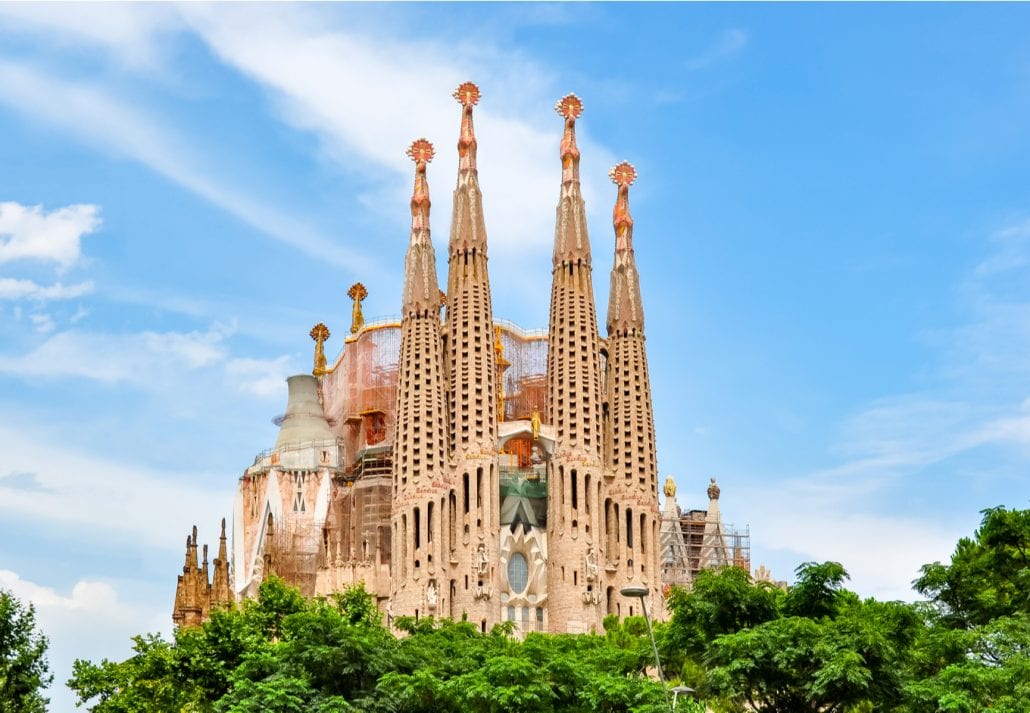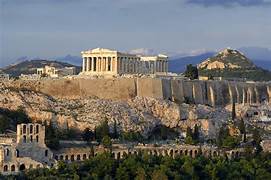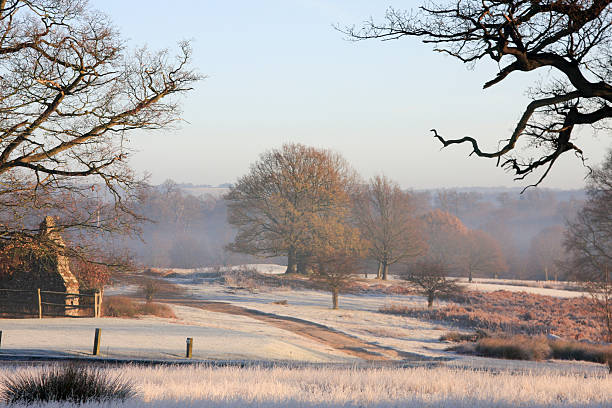October 2008. Amsterdam welcomed us with drizzle and that particular grey light that somehow makes the city's canals shimmer like mirrors. We arrived by train, emerging from Centraal Station into a organized chaos of bicycles, trams, and pedestrians all navigating the cobblestones with practiced ease. This was a city built on water and tolerance, where gabled houses lean companionably against each other and where beauty and grit coexist without apology. Amsterdam doesn't pretend to be anything other than exactly what it is – and that honesty is perhaps its greatest charm.
A City of Concentric Canals
Amsterdam's canal system is a UNESCO World Heritage site, and within our first hour, we understood why. The four main canals – Singel, Herengracht, Keizersgracht, and Prinsengracht – form concentric semicircles around the old medieval center, creating a city that looks from above like a spider's web made of water. But statistics can't capture what it feels like to actually be there, wandering along the canal banks as autumn leaves drifted down to float on the dark water.
"Amsterdam taught us that the most beautiful cities are the ones that embrace their contradictions."
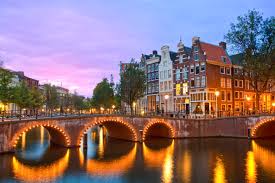
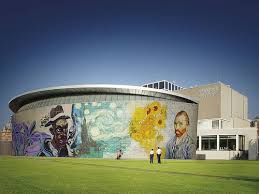


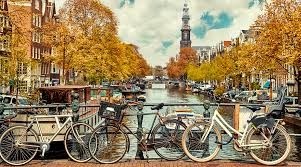
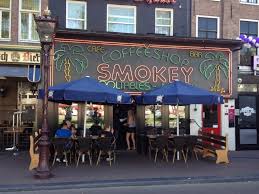
Walking the Waterways
We spent hours simply walking along the canals, holding hands and getting deliberately lost. The 17th-century merchants' houses – narrow and tall with their distinctive gabled roofs – lined the water like something from a storybook. Each building leaned at a slightly different angle (the result of being built on wooden piles driven into soft ground), giving the entire city a charming, slightly tipsy appearance.
The bridges were everywhere – Amsterdam has more bridges than Venice – and we made a game of trying to photograph each other on different ones. Our favorite was the Magere Brug (Skinny Bridge) over the Amstel River, a white wooden drawbridge that looked especially magical when illuminated at night. We stood in the middle, watching boats pass beneath us and the city lights reflecting on the water, and agreed that this might be one of the most romantic cities we'd ever visited.
- Canal Ring: Four concentric waterways forming the city's heart
- Leaning Houses: 17th-century architecture with character and tilt
- Bridge Counting: Over 1,200 bridges connecting the city
- Boat Life: Houseboats turned into floating homes
- Autumn Colors: Golden leaves floating on dark water
Van Gogh Museum: A Mind on Canvas
The Van Gogh Museum was one of our main reasons for coming to Amsterdam. We'd both loved his work in books and prints, but standing in front of the actual paintings – seeing the thick brushstrokes, the violent application of paint, the colors that seemed to vibrate with intensity – was overwhelming.
We moved through the galleries chronologically, watching Van Gogh's style evolve from the dark, earthy tones of his early Dutch period to the explosive colors of his time in the south of France. "The Potato Eaters" showed us his empathy for working people. "The Bedroom" made us feel like we were invading his private space. "Sunflowers" proved that yellow could contain a thousand different emotions.
But it was "Almond Blossom" that stopped us both in our tracks. The delicate white flowers against that luminous blue sky – Van Gogh painted it for his newborn nephew, a celebration of new life created by a man who struggled so deeply with his own existence. We stood in front of it for a long time, not speaking, just looking. Sometimes art doesn't need commentary.
Walking through the museum, reading about his mental struggles, his difficult relationships, his desperate search for meaning through art, we couldn't help but feel the tragedy of it all. Here was a man who created such beauty while experiencing such pain, who died thinking himself a failure, never knowing that generations would consider him one of the greatest artists who ever lived.
The Red Light District: Contradictions in Neon
Amsterdam's famous Red Light District – De Wallen – was inevitable. Every visitor goes, even if just out of curiosity. We went in the evening when the red neon lights reflected off the canal water and the narrow medieval streets took on a surreal quality.
It was stranger than we expected – not shocking or seedy, but oddly matter-of-fact. Women in windows, bathed in red light, like living displays. Tourists gawking and photographing (despite the strict prohibition against photos). Sex shops next to centuries-old churches. Cannabis cafes near chocolate shops. The oldest profession practiced openly in some of Europe's most beautiful medieval architecture.
What struck us most was how normal it all seemed to the locals. This wasn't hidden away in a seedy part of town – it was right in the historic center, integrated into daily life. An old lady walked her dog past window displays without a second glance. Families on bicycles navigated streets lined with sex shops. Amsterdam's approach to regulation rather than prohibition was on full display, and whatever your moral position, you had to admire the pragmatism.
We didn't stay long – it felt voyeuristic, and despite the openness, there was something sad about it all. But it was undeniably part of Amsterdam's character, part of that Dutch directness and tolerance that makes the city so unique.
Anne Frank House: Where History Becomes Personal
The Anne Frank House was the hardest part of our Amsterdam visit, but also the most important. We queued for over an hour to get in, standing in the October drizzle, but nobody complained. We all knew what we were about to experience.
Walking through the actual building where Anne, her family, and four others hid for over two years was profoundly moving in ways we hadn't anticipated. The narrow staircase behind the bookcase. The small rooms where eight people lived in terrified silence. The marks on the wall where Otto Frank measured his daughters' growth. Anne's pictures of movie stars still stuck to the walls.
The museum is deliberately austere – there's no furniture in the hiding place, nothing to distract from the space itself and what happened there. We moved through the rooms slowly, reading the excerpts from Anne's diary displayed on the walls. Her voice – intelligent, funny, hopeful despite everything – made it impossible to think of the Holocaust as abstract history. This was a real girl, with real dreams, who loved movie stars and argued with her mother and hoped to become a writer.
The most devastating part was the timeline at the end. The dates of their capture, deportation, and deaths. Anne and her sister Margot died of typhus in Bergen-Belsen just weeks before the camp was liberated. So close to survival. So close to a life that should have been lived.
We left in silence, both of us emotional. Outside, Amsterdam continued its daily business – bicycles rang their bells, trams rumbled past, tourists took selfies. The contrast between the horror we'd just learned about and the normal life continuing around us was jarring. But perhaps that's the point. Life continues, but we have a responsibility to remember, to bear witness, to never forget.
Dutch Cuisine and Cozy Cafes
Amsterdam may not be famous for haute cuisine, but we discovered it has its own delicious charm. We tried bitterballen – those crispy, deep-fried balls of meat ragout that are the perfect accompaniment to beer. Stroopwafels bought fresh from a street vendor, the caramel still warm and gooey. Herring sandwiches from a street stall, eaten the Dutch way – held by the tail and lowered into your mouth.
But what we loved most were the brown cafes – bruine kroegen – those traditional Dutch pubs with their dark wood interiors, low ceilings, and centuries of tobacco smoke staining the walls brown. We found a tiny place in the Jordaan neighborhood, where locals played cards and the bartender knew everyone's order by heart. We sat by the window with our Heinekens (which somehow tasted better in Amsterdam than anywhere else), watching the rain fall on the canal outside, feeling like we'd found a secret piece of authentic Amsterdam.
Bicycles: The True Kings of Amsterdam
We'd been warned about Amsterdam's bicycle culture, but nothing quite prepares you for the reality. There are more bicycles than people in Amsterdam, and they rule the streets with absolute authority. We quickly learned to check the bicycle lane before stepping anywhere, after nearly being run over multiple times by cyclists who showed no mercy to confused tourists.
On our third day, we decided to join them. We rented bikes and set off into the organized chaos. It was terrifying for about ten minutes, then suddenly it clicked. We were weaving through traffic, ringing our bells at pedestrians, flying across bridges and along canals with the wind in our faces. Amsterdam on a bicycle is a completely different city – faster, more intimate, more real. We understood why the Dutch are the happiest cyclists in the world.
Layers of History, Layers of Life
What made Amsterdam special wasn't any single attraction – it was how the city layers different aspects of life on top of each other without apology. Medieval buildings housing modern startups. World-class art museums next to cannabis cafes. Solemn Holocaust memorials in a city known for its party atmosphere. Red light districts in Renaissance architecture.
The Dutch call it tolerance, but it's more than that. It's a pragmatic acceptance that life contains contradictions, that people are complicated, that a city can honor its tragic history while celebrating its freedoms, that beauty and grit can coexist.
Our last evening, we took a canal cruise at sunset. As the boat glided through the waterways, passing under bridge after bridge, the guide pointed out houses where Rembrandt lived, where the Dutch East India Company made its fortunes, where resistance fighters hid during the war. Every building had stories, every canal had history.
Amsterdam in October 2008 gave us so much – beauty and heartbreak, art and history, laughter and tears. We left holding hands, grateful we'd experienced it together, knowing that some cities change you. Amsterdam didn't just show us its canals and museums – it showed us how to hold contradictions, how to be pragmatic without losing compassion, how to remember the past while living fully in the present.
And somewhere in those tilting houses and tree-lined canals, in the brushstrokes of Van Gogh and the words of Anne Frank, Amsterdam had shown us that the most honest cities are the ones that don't hide their complexity. They embrace it, live it, and invite you to understand that life – like Amsterdam itself – is beautiful not despite its contradictions, but because of them.


